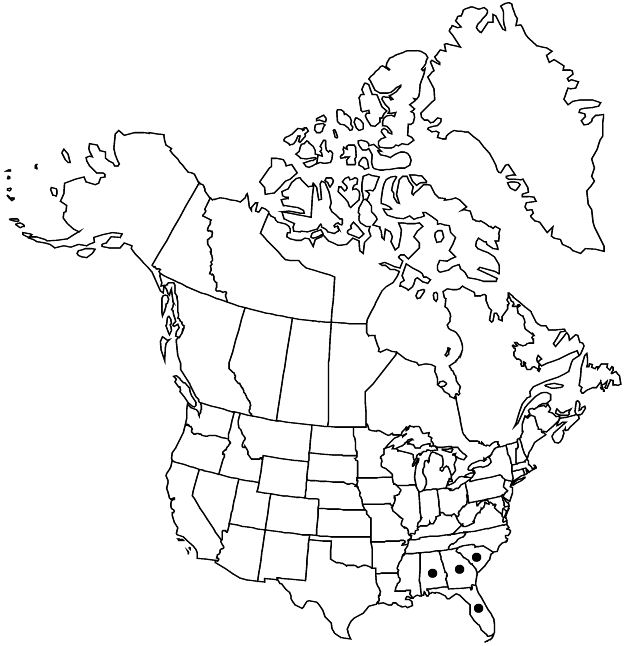Nyssa ogeche
Arbust. Amer., 97. 1785.
Trees, 10–30 m, trunks of old individuals usually grotesquely formed, abruptly branching into multiple large stems 1–6 m above ground, proximal limbs spreading to slightly drooping, crown irregular; bark irregularly fissured; twigs puberulent. Leaves: petiole 6–20(–35) mm; blade elliptic to narrowly obovate, 5–12 × 3–5.5 cm, herbaceous, base cuneate to rounded, margins entire, rarely coarsely dentate distally, apex acute to obtuse, rarely acuminate, abaxial surface glabrous or puberulent, adaxial surface glabrous. Inflorescences: peduncle 1.5–2 cm, densely hairy; staminate (1–)2–5-flowered, bisexual and pistillate 1–2-flowered. Staminate pedicels absent. Flowers: ovary hairy. Drupes yellow, orange, or red, not glaucous, oblong-ellipsoid, 22–28 mm, smooth; stone 18–20 mm, with several roughened, longitudinal papery ridges.
Phenology: Flowering spring.
Habitat: Blackwater stream banks, depression swamps, moist woods.
Elevation: 0–100 m.
Distribution

Ala., Fla., Ga., S.C.
Discussion
Thousands of hectares of Nyssa ogeche have been planted in bee farms along the lower Apalachicola River in Florida and around swamps where it grows naturally (R. M. Burns and B. H. Honkala 1990, vol. 2). Bees collect nectar from the trees to make tupelo honey. The mature fruit, known as Ogeche lime, has a subacid flavor and is made into preserves.
Selected References
None.